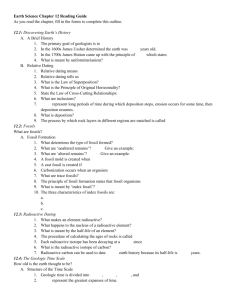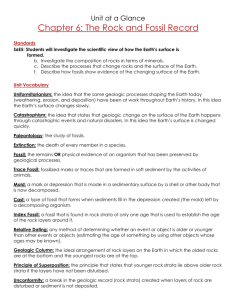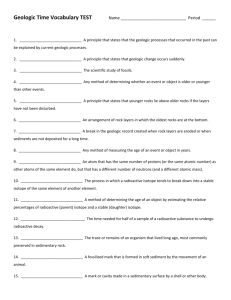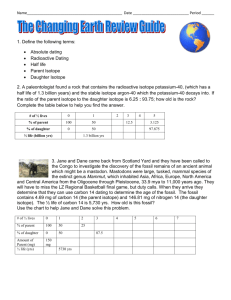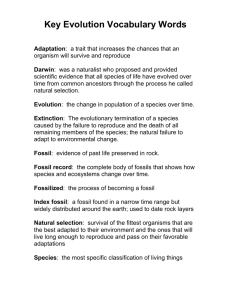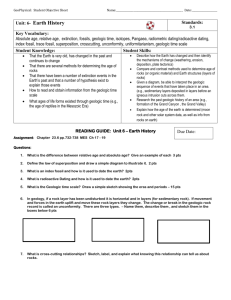STUDY GUIDE Chapter 6 The Rock and Fossil Records
advertisement
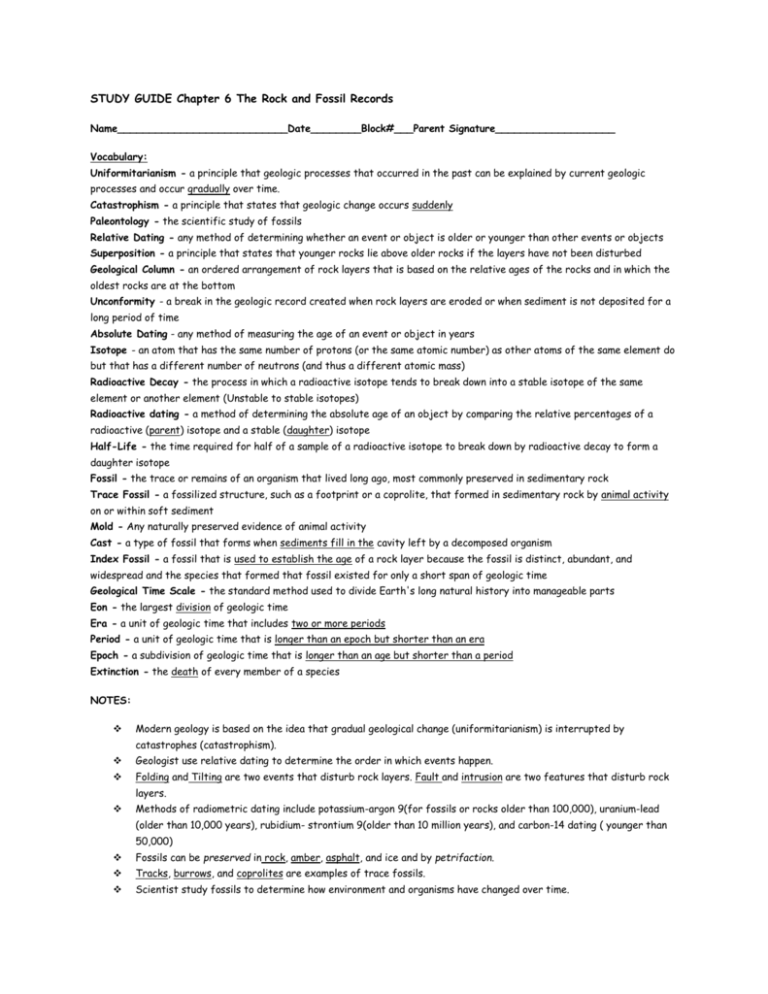
STUDY GUIDE Chapter 6 The Rock and Fossil Records Name___________________________Date________Block#___Parent Signature___________________ Vocabulary: Uniformitarianism - a principle that geologic processes that occurred in the past can be explained by current geologic processes and occur gradually over time. Catastrophism - a principle that states that geologic change occurs suddenly Paleontology - the scientific study of fossils Relative Dating - any method of determining whether an event or object is older or younger than other events or objects Superposition - a principle that states that younger rocks lie above older rocks if the layers have not been disturbed Geological Column - an ordered arrangement of rock layers that is based on the relative ages of the rocks and in which the oldest rocks are at the bottom Unconformity - a break in the geologic record created when rock layers are eroded or when sediment is not deposited for a long period of time Absolute Dating - any method of measuring the age of an event or object in years Isotope - an atom that has the same number of protons (or the same atomic number) as other atoms of the same element do but that has a different number of neutrons (and thus a different atomic mass) Radioactive Decay - the process in which a radioactive isotope tends to break down into a stable isotope of the same element or another element (Unstable to stable isotopes) Radioactive dating - a method of determining the absolute age of an object by comparing the relative percentages of a radioactive (parent) isotope and a stable (daughter) isotope Half-Life - the time required for half of a sample of a radioactive isotope to break down by radioactive decay to form a daughter isotope Fossil - the trace or remains of an organism that lived long ago, most commonly preserved in sedimentary rock Trace Fossil - a fossilized structure, such as a footprint or a coprolite, that formed in sedimentary rock by animal activity on or within soft sediment Mold - Any naturally preserved evidence of animal activity Cast - a type of fossil that forms when sediments fill in the cavity left by a decomposed organism Index Fossil - a fossil that is used to establish the age of a rock layer because the fossil is distinct, abundant, and widespread and the species that formed that fossil existed for only a short span of geologic time Geological Time Scale - the standard method used to divide Earth's long natural history into manageable parts Eon - the largest division of geologic time Era - a unit of geologic time that includes two or more periods Period - a unit of geologic time that is longer than an epoch but shorter than an era Epoch - a subdivision of geologic time that is longer than an age but shorter than a period Extinction - the death of every member of a species NOTES: Modern geology is based on the idea that gradual geological change (uniformitarianism) is interrupted by catastrophes (catastrophism). Geologist use relative dating to determine the order in which events happen. Folding and Tilting are two events that disturb rock layers. Fault and intrusion are two features that disturb rock layers. Methods of radiometric dating include potassium-argon 9(for fossils or rocks older than 100,000), uranium-lead (older than 10,000 years), rubidium- strontium 9(older than 10 million years), and carbon-14 dating ( younger than 50,000) Fossils can be preserved in rock, amber, asphalt, and ice and by petrifaction. Tracks, burrows, and coprolites are examples of trace fossils. Scientist study fossils to determine how environment and organisms have changed over time.



